I have recently been enjoying the showy summer flowers in the UK, Ireland and Holland, including three varieties of orchid, of which there are 216 in Europe and 51 in the UK and Ireland!
I was also interested to try and work out which were their weeds, such as rhododendron. However it has been such a pleasure to return to our wonderful winter bush with so much to see, so unlike the bare winter forests and heathlands in those colder climates.
There are many plants in our environment, written about in previous months, which are still in full flower such as our heath, Sweet Wattle, and correas. The tiny white, tubular flowers of Prickly Cryptandra, Cryptandra tomentosa var 1, are now turning pink to rose-red.
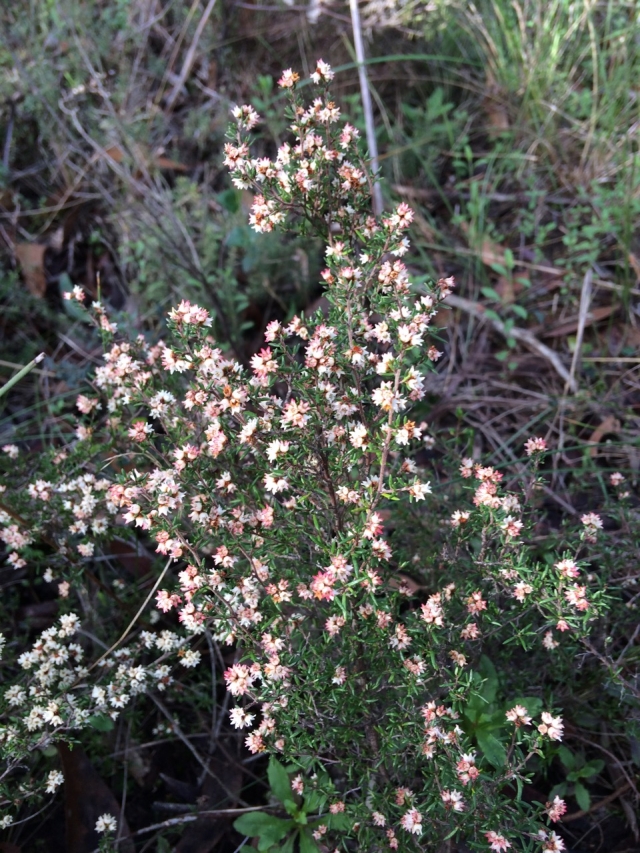
Prickly Cryptandra
When walking along the cliff tops I have been almost overwhelmed by the sweet scent from the insignificant four-petalled yellow flowers of the appropriately named Bower Spinach, Tetragonia implexicoma.
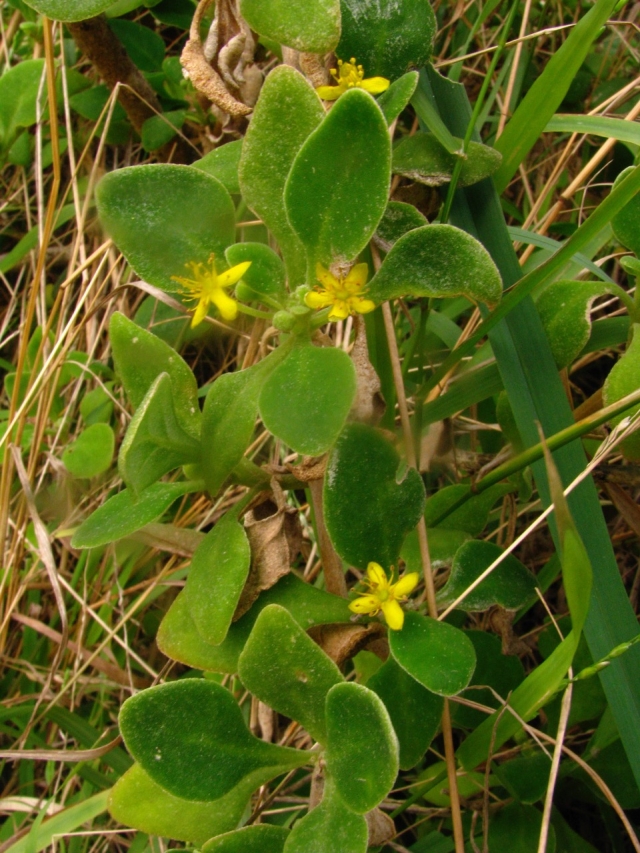
Bower Spinach
Also putting on a bright show are the much larger yellow daisy flowers of the Variable Groundsel, Senecio pinnatifolius var. maritimus. There are eleven Senecio species in our district, some called Groundsel and others Fireweed. I can identify three of them, and this is the only one to flower in the late winter.
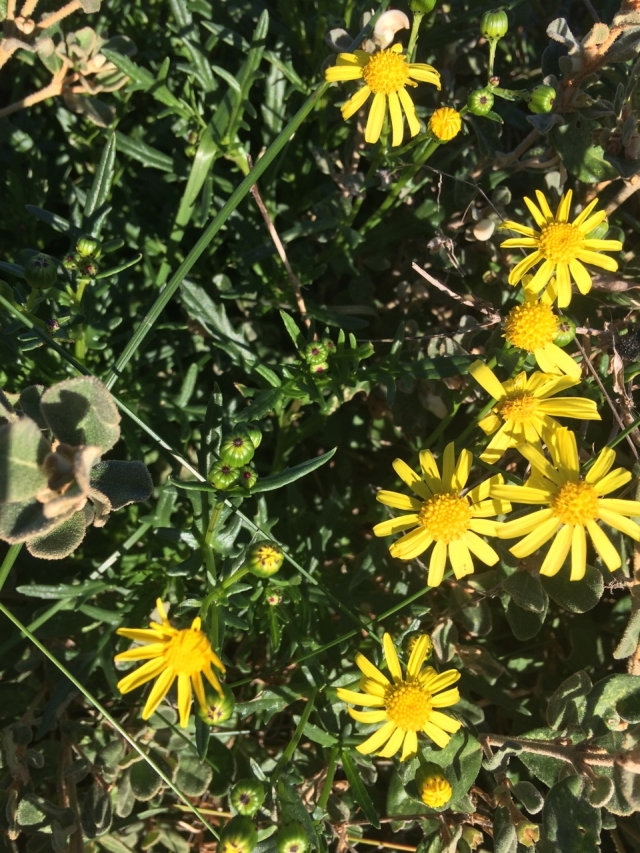
Variable Groundsel
In heath and woodland areas Common Beard-heath, Leucopogon virgatus var. virgatus, is well into flowering. The delicate, scented, white flowers with fluffy petals are always worth a close look and a smell.
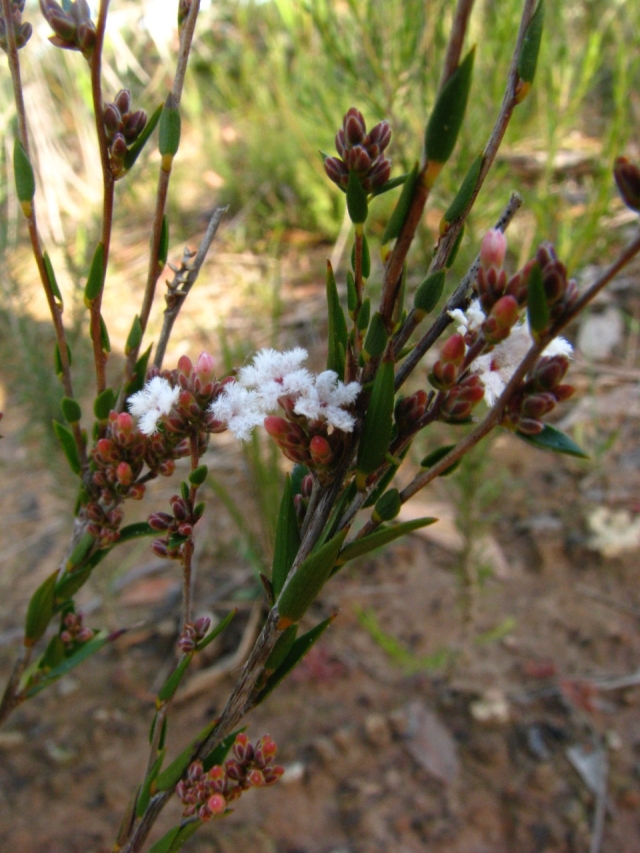
Common Beard-heath
In July at Allen Noble Sanctuary the Rough Bush-pea, Pultenaea scabra, had tiny yellow pea flowers about to burst into bloom. What a spectacular display they will make sometime this month! The tiny, distinctive heart-shaped leaves make this plant so easy to identify. Have a look near the scout camp in Anglesea and Bambra Rd in Aireys Inlet for Soft Bush-pea Pultenaea mollis. Later this month this plant should have massed displays of its pea flowers.
Two plants to look out for with blue/mauve pea flowers are Austral Indigo and Common Hovea. Austral Indigo, Indigofera australis, a delicate-looking spreading shrub, is developing pretty mauve-pink pea flowers. This plant tends to grow in groups in shaded areas, and has smallish oval, paired leaves. The crushed roots were used by Aborigines to poison fish.
The flowers of the less showy Common Hovea, Hovea heterophylla, grow in small clusters in the leaf axils of this small shrub as it straggles through other vegetation.
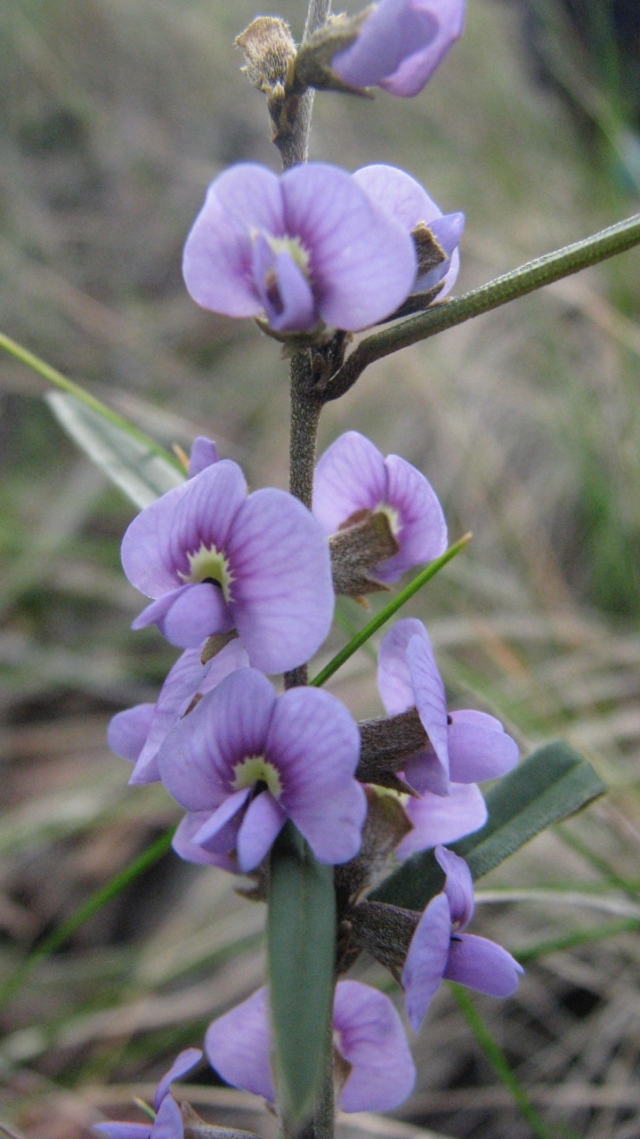
Common Hovea
August is a great month to look for flowers on the fascinating carnivorous sundews, Droseras. I always love to see and smell the ground-hugging, single white flowers, just above the red, glistening rosettes of leaves, of the Scented Sundew, Drosera aberrans (previously whittakeri subsp. aberrans). However, they are often hard to find as they may only flower after being burnt.
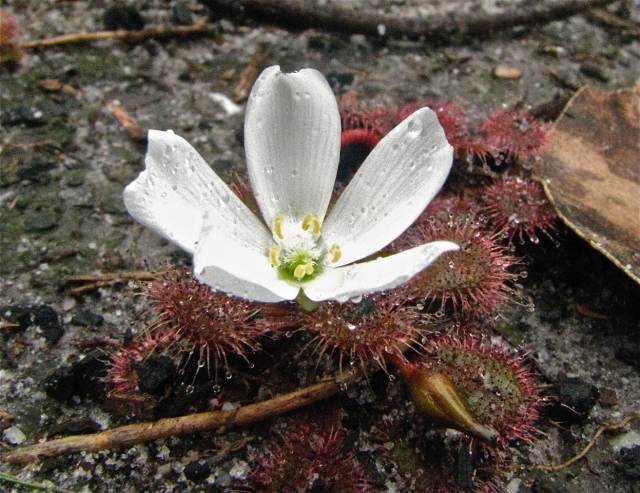
Scented Sundew
The two most common upright sundews, Tall Sundews, D. auriculata (previously D. peltata subsp. auriculata) and Climbing Sundews, D. macrantha subsp. macrantha, have small white to pink flowers.
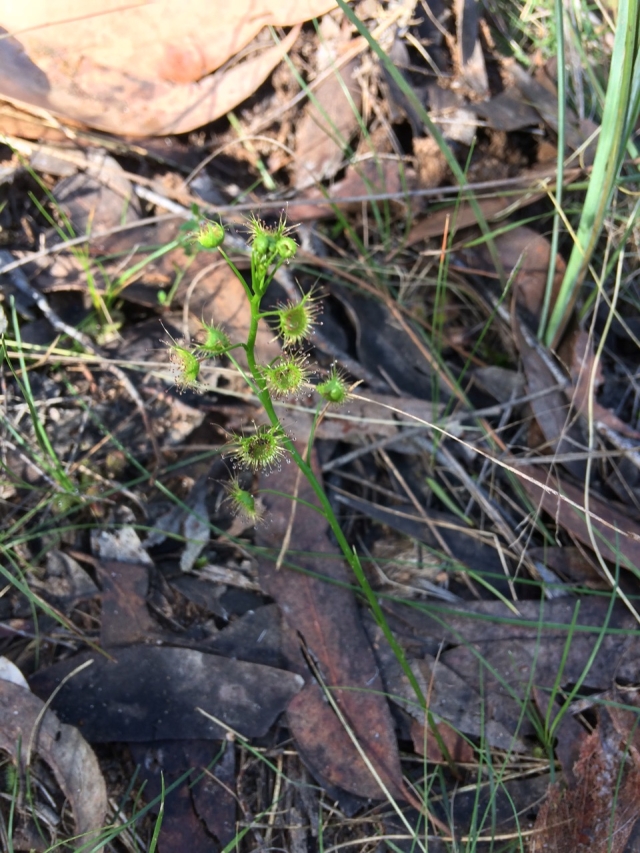
Tall Sundew
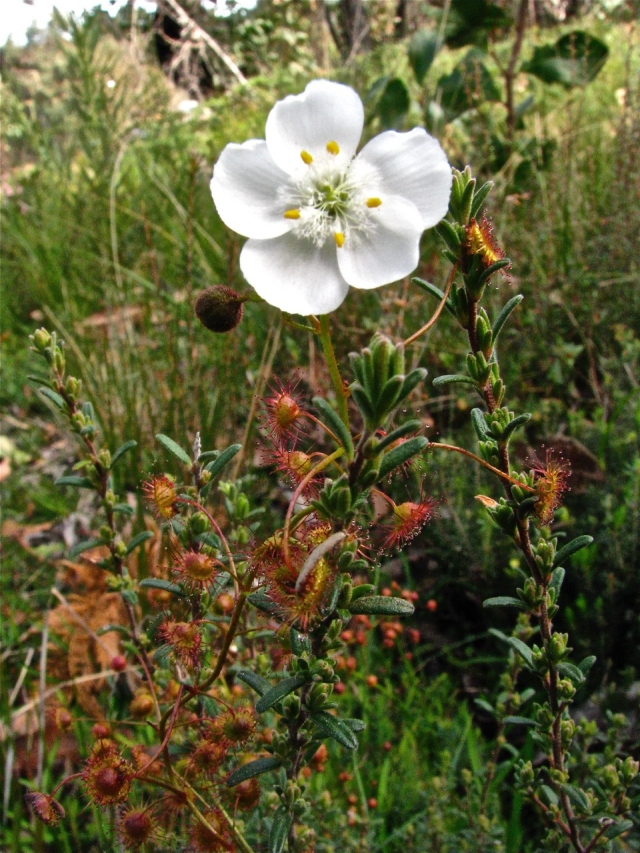
Climbing Sundew
It is worth a close look at the leaves for insects trapped by the sticky hairs. I recently learned that there is a subtle difference in the leaf shape of the two latter plants. The Tall Sundew has shield-shaped discs, whereas the Climbing has cup-like disks. It’s all there in Flowers of Anglesea and Aireys Inlet, but I had never noticed.
There are so many plants coming into flower, including a range of wattles such as Myrtle Wattle, Acacia myrtifolia. I always enjoy seeing two small and delightful white plants, the upright Creamy Candles, Stackhousia monogyna, and the tiny, starry Early Nancy, Wurmbea diocia subsp. diocia, with male and female plants.
So much to see…and spring is coming!
Ellinor Campbell